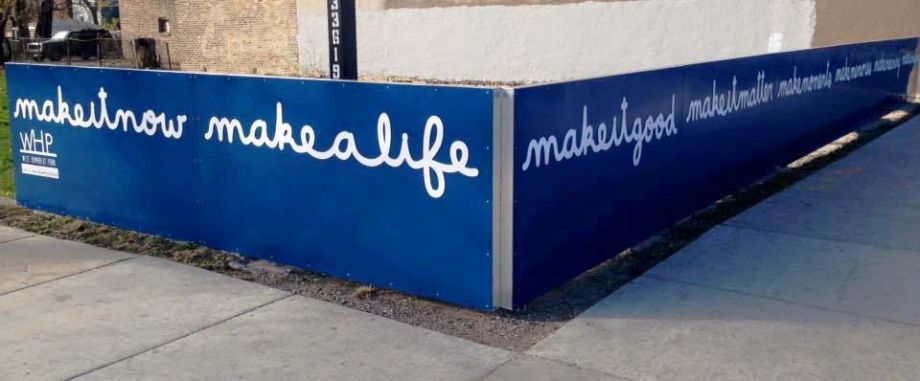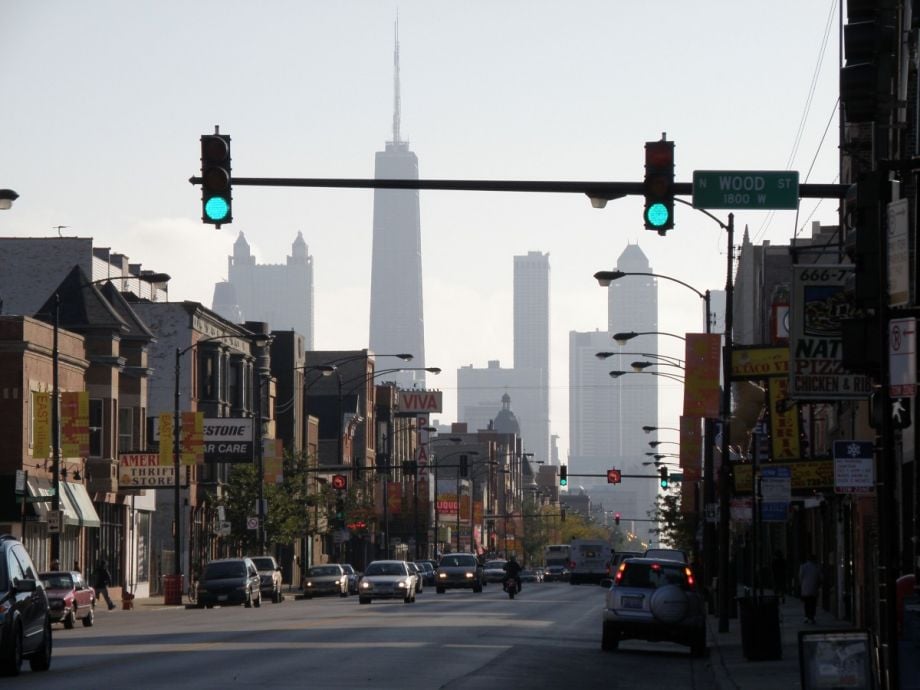As a restauranteur, Quentin Love has a history of being ahead of the game. He started his first restaurant chain, Quench, 15 years ago on the South Side of Chicago, featuring turkey, chicken and vegetarian options, no beef and no pork. Quench eventually grew to eight locations, and Love earned a reputation for healthy cooking around the the Chicagoland area.
Chet Jackson met Love years ago at one of Love’s other restaurants. After becoming executive director of the West Humboldt Park Family and Community Development Council (WHPDC), Jackson needed an entrepreneur to move into the West Chicago Avenue corridor that WHPDC was planning to revitalize. Love happened to be looking for a space on the West Side of Chicago. Jackson made him an offer he couldn’t refuse.
“I didn’t have anything on the west side. I didn’t have a whole lot of projects on the table,” Love says. “Chet offered me an opportunity where I could just come in and create.”
WHPDC had built out a space at 3506 West Chicago Avenue, with a loan from the Chicago Community Loan Fund (CCLF), a regional community development financial institution. Love moved in and dubbed the new restaurant “Turkey Chop.” It opened in 2012.
“It’s the first sit-down restaurant in this neighborhood in over 10 years,” Jackson says.
In a city where nearly half of black men are out of work or out of school, revitalizing commercial corridors like West Chicago Avenue is especially urgent. According to WHPDC, unemployment in the neighborhood is around 20 percent, and around 25 percent of storefronts are vacant along the eight-block stretch between Kedzie and Central Park Avenues.
From Turkey Chop’s early days, Love found ways to get involved with the surrounding community. Every Monday from 11 a.m. to 3 p.m., the restaurant closes and becomes a soup kitchen staffed by volunteers offering free, hot and healthy meals to anyone who comes in, as well as delivering meals to those who cannot. They’ve served more than 50,000 free meals as of last December. On Monday evenings, Turkey Chop offers healthy cooking classes, in partnership with WHPDC and Northwestern Memorial Hospital, emphasizing healthy cooking to address diabetes and other health issues. About 10 people attend per week.
This March, the restaurant will inaugurate the Turkey Chop Culinary Arts Program, a 10-week workforce development program for people interested in restaurant industry careers. The curriculum is based largely on Love’s book, to be released this week, The Motivational Cookbook.
Within five to 10 years, Love envisions having at least 10 Turkey Chop locations in revitalizing neighborhoods around the Chicago area, each serving as a workforce development springboard for men and women to begin building new careers in the restaurant industry, while also providing access to healthy food for communities sorely lacking it.
Meanwhile, WHPDC has been laying the groundwork for transforming the commercial corridor around the original Turkey Chop. They stewarded the creation of the West Humboldt Park SSA (Special Service Area, known as business improvement districts in most other cities). WHPDC now manages the SSA.
“It’s the first SSA on the West Side of Chicago,” Jackson says.

A beautification panel surrounds a future business location along the West Chicago Avenue Corridor in Chicago’s West Humboldt Park neighborhood. (Credit: CCLF)
After Turkey Chop, WHPDC convinced Brown Sugar Bakery, led by another local Chicago celebrity chef, Stephanie Hart, to open a location (coming soon) on the corridor.
WHPDC also plans to open Project 773, a business incubator specifically targeting nonviolent offenders recently out of prison. Jackson envisions spinning it off eventually as an independent venture.
Just one block off the corridor, a large Salvation Army campus opened up in August 2015, bringing jobs as well as retail to the neighborhood. Also just one block off the corridor is Salsedo Press, a 40-year-old worker-owned printing company, certified as a minority-business enterprise in Chicago. Like WHPDC, Salsedo Press is one of many in the West Humboldt Park area that have borrowed from CCLF over the years.
“In the last 25 years, our highest number of individual loans have been in the Humboldt Park Community, complementing affordable housing and economic development loans in the same neighborhood,” says Calvin Holmes, president of CCLF.
WHPDC and CCLF worked side by side to create the revitalization plan for the West Chicago Avenue corridor, with support from $500,000 in grants over a two-year period from the Partners In Progress Project.
There were some earlier redevelopment plans going around, Jackson says, but they focused largely on Greater Humboldt Park (including one from the LISC New Communities Program), which he argues doesn’t properly account for the gaping income disparity between West Humboldt Park and the rest of the area.
The WHPDC plan coordinates resources from multiple streams, starting with the SSA, which Jackson estimates has brought in about $220,000 since its inception in 2013. Those resources have gone mostly toward beautification, ongoing street cleaning and security services — typical of business improvement districts. The SSA Commission meets publicly on the fourth Tuesday of every month.
Some of the other financial resources under the plan come from the city of Chicago (including from its Micro-Market Recovery Program), and from CCLF through the U.S. Treasury’s Healthy Foods Financing Initiative.
There are also non-financial resources that CCLF can leverage, such as its relationship with city agencies. CCLF recently got Chicago’s Department of Transportation to remove a morning/evening rush hour parking ban from the West Chicago Avenue Corridor, hopefully convincing more visitors from other parts of the Chicago area to spend time (and money) in the neighborhood.
“It was a residual holdover from an expressway construction detour that never got undone,” Holmes explains.
Recognizing the urgency of Chicago’s black unemployment situation, CCLF now has a plan to emulate what it has done with WHPDC in West Humboldt Park in other neighborhoods around Chicago. They recruited a long-time Chicago-area CDC leader and consultant, Maurice Williams, to lead their efforts to do commercial revitalization in cohorts of multiple neighborhoods at the same time on an ongoing basis. It’s a recognition that, in a big metro like Chicago, there are so many different neighborhoods, and some of the most vulnerable ones are places CCLF can’t reach effectively without another community development partner based in each neighborhood.
“There’s a great need and demand for our financing in many different smaller communities in Chicago, but they might be places that lack capacity to get certain levels of development completed,” says Williams, now vice president for economic development at CCLF. “Cohort members can complement each other, learn from each other, and we can leverage our regional position to get them capacity building and other resources they might not be able to afford on their own.”
CCLF will choose neighborhoods to be part of cohorts based on a number of factors, grouped under three broad areas: location (is it a low-income community in line with CCLF’s mission?); local capacity (does the local CDC have a track record of successful partnership, and could they possibly leverage CCLF lending now or in the near future?); and layered resources (is there funding available to leverage for the neighborhood from city, state or federal sources, through CCLF or the local CDC partner?).
This year, CCLF will be starting that journey with the Chatham and Bronzeville neighborhoods, both on the South Side of Chicago.
As it so happens, Love has opened restaurants in both neighborhoods before.
The Equity Factor is made possible with the support of the Surdna Foundation.

Oscar is Next City's senior economic justice correspondent. He previously served as Next City’s editor from 2018-2019, and was a Next City Equitable Cities Fellow from 2015-2016. Since 2011, Oscar has covered community development finance, community banking, impact investing, economic development, housing and more for media outlets such as Shelterforce, B Magazine, Impact Alpha and Fast Company.
Follow Oscar .(JavaScript must be enabled to view this email address)
















